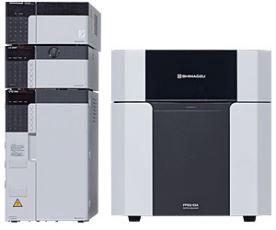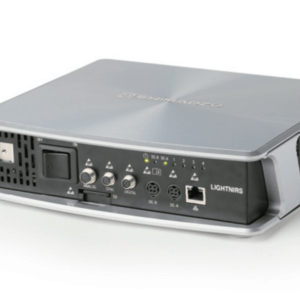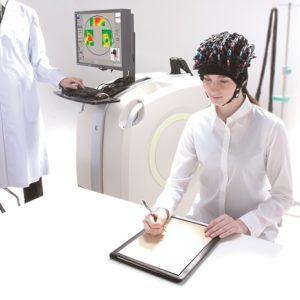PPSQ-51A/53A
Специализированное ПО секвенатора белков LabSolutions PPSQ включает все функции управления прибором, получения и обработки результатов анализа и автоматического определения последовательности аминокислот в полипептидной цепи.
- Описание
- Isocratic System
- Gradient System
- Чувствительность измерений
- Соответствие
- Функции
- Блок-схема
- Benefits
Описание
More Reliable Analysis of Protein N-terminal Amino Acid Sequences
Software Compliant with FDA 21 CFR Part 11
Features
The PPSQ-51A/53A continues the tradition of providing reliable and sensitive N-terminal protein sequencing to researchers through automated Edman Degradation. Whether transitioning over from another sequencer or adopting the technique for the first time, the intuitive software and robust Shimadzu hardware will make protein sequencing easy on your laboratory.
Isocratic System
Features
Analysis of PTH-Amino Acids Using Isocratic Mode
Performing PTH-amino acid analysis in an isocratic mode in which eluents are recycled to allow repeated use of the mobile phase makes it possible to reduce liquid waste and running costs.
Simple Operations
Specialized protein sequencer software incorporating control functions for the reaction unit and HPLC analysis unit makes it easy to perform sequence analysis.
Analytical Stability and Higher Detection
Baseline Stability
PPSQ series protein sequencers separate PTH-amino acids isocratically. This improves baseline stability and allows high-sensitivity analysis of PTH-amino acids.
Retention Time Reproducibility
Isocratic sequence analysis provides more stable retention times. Therefore, peaks detected in previous cycles can be cancelled using substation chromatogram processing, making it easier to identify sequences.
Specifications
| Main Unit | PPSQ-51A/53A |
|---|---|
| Reaction method | Edman degradation |
| Reaction time | PPSQ-51A: 46.5 min/cycle |
| PPSQ-53A: 48 min/cycle | |
| Number of reactors | PPSQ-51A: 1 |
| PPSQ-53A: 3 | |
| Sample immobilization method | Glass fiber disk (8 mm dia.) or PVDF membrane |
| Reactor temperature control range | 10 °C above room temperature to 60 °C |
| Converter temperature control range | 10 °C above room temperature to 70 °C |
| Number of reagents/solvents | 7 |
| Reagent/solvent delivery method | Nitrogen gas pressure |
| Dimensions | W510 x D500 x H540 mm |
| Weight | PPSQ-51A: 43 kg PPSQ-53A: 45 kg |
| Solvent Delivery Module | LC-20AT |
|---|---|
| Flow rate setting range | 0.001 to 10.000 mL/min |
| Dimensions | W260 x D420 x H140 mm |
| Weight | 11 kg |
| Detector | SPD-M30A |
|---|---|
| Wavelength setting range | 190 to 700 nm |
| Dimensions | W260 x D500 x H140 mm |
| Weight | 12 kg |
| Oven | CTO-20A |
|---|---|
| Temperature control range | 10 °C above room temperature to 60 °C |
| Dimensions | W260 x D420 x H415 mm |
| Weight | 20 kg |
| Control PC | |
|---|---|
| OS | Windows 7 Professional SP1 32/64 bit |
Note: In the interests of product improvement, these specifications may change without notice.
Note: Windows is a registered trademark of Microsoft Corporation in the U.S. and other countries.
Standard Configurations
PPSQ-51A System
| Configuration | PPSQ-51A (main unit) |
|---|---|
| LC-20AT | |
| SPD-M30A | |
| CTO-20A |
PPSQ-53A System
| Configuration | PPSQ-53A (main unit) |
|---|---|
| LC-20AT | |
| SPD-M30A | |
| CTO-20A |
Other Items Provided by User
| Installation space | Desktop: W1,600 x D600 x H800 mm min. |
|---|---|
| Weight: Approx. 100 kg | |
| Power supply | 120-230 VAC, 50/60 Hz, 1,500 VA max. |
| Nitrogen gas | Purity: 99.9999% min. |
| A cylinder pressure regulator and gas tubing (10 m) are provided as standard accessories. | |
| Exhaust equipment | In order to provide an exhaust for gases produced by waste liquids, an exhaust tube must either be connected to exhaust equipment or vented outside. An exhaust tube (20 m) is provided as a standard accessory. |
Note: The required installation space and power supply may change according to the PC and display used.
Gradient System
Features
High-Sensitivity Analysis
Gradient separation enables detection of trace PTH-amino acids.
Analysis Stability
Equipped with a high-performance detector and a solvent delivery pump that provides excellent pumping performance even in the micro flowrate range.
High-Sensitivity Analysis
A high-sensitivity flow cell enables high-sensitivity detection of PTH-amino acids, which allows for sequential analysis using trace samples.
Analysis Stability
This system has high analysis stability because it is equipped with a high-performance detector and a solvent delivery pump that provides excellent pumping performance, even in the micro flowrate range, combine to ensure high analysis stability. Because chromatograms with good reproducibility can be obtained, peaks detected in the previous cycle can be canceled by performing differential chromatogram processing. This enables easy identification of PTH-amino acids even from trace samples.
Example of High-Sensitivity Sequence Analysis Using Trace Samples
Erythropoietin Analysis
Erythropoietin is a hormone secreted by the kidney that stimulates red blood cell production.
Specifications
| Main Unit | PPSQ-51A/53A |
| Reaction method | Edman degradation |
| Reaction time | PPSQ-51A: 46.5 min/cycle |
| PPSQ-53A: 48 min/cycle | |
| Number of reactors | PPSQ-51A: 1 |
| PPSQ-53A: 3 | |
| Sample immobilization method | Glass fiber disk (8 mm dia.) or PVDF membrane |
| Reactor temperature control range | 10 °C above room temperature to 60 °C |
| Converter temperature control range | 10 °C above room temperature to 70 °C |
| Number of reagents/solvents | 7 |
| Reagent/solvent delivery method | Nitrogen gas pressure |
| Dimensions | W510 x D500 x H540 mm |
| Weight | PPSQ-51A: 43 kg PPSQ-53A: 45 kg |
| Solvent Delivery Module | LC-20AD |
| Flow rate setting range | 0.0001 to 10 mL/min |
| Dimensions | W260 x D420 x H140 mm |
| Weight | 10 kg |
| Detector | SPD-M30A |
| Wavelength setting range | 190 to 700 nm |
| Dimensions | W260 x D500 x H140 mm |
| Weight | 12 kg |
| Oven | CTO-20AC |
| Temperature control range | Room temperature — 10 °C to 60 °C |
| Dimensions | W260 x D420 x H415 mm |
| Weight | 23 kg |
| Control PC | |
| OS | |
| Windows 10 Pro 64 bit | |
Note: In the interests of product improvement, these specifications may change without notice.
Note: Windows is a registered trademark of Microsoft Corporation in the U.S. and other countries.
Standard Configurations
PPSQ-51A System
| Configuration | PPSQ-51A (main unit) |
| LC-20AD (two) | |
| SPD-M30A | |
| CTO-20AC | |
| DGU-20A3R |
PPSQ-53A System
| Configuration | PPSQ-53A (main unit) |
| LC-20AD (two) | |
| SPD-M30A | |
| CTO-20AC | |
| DGU-20A3R |
Other Items Provided by User
| Installation space | Desktop: W1,800 x D600 x H600 mm min. |
| Weight: Approx. 120 kg | |
| Power supply | 120-230 VAC, 50/60 Hz, 1,500 VA max. |
| Nitrogen gas | Purity: 99.9999% min. |
| A cylinder pressure regulator and gas tubing (10 m) are provided as standard accessories. | |
| Exhaust equipment | In order to provide an exhaust for gases produced by waste liquids, an exhaust tube must either be connected to exhaust equipment or vented outside. An exhaust tube (20 m) is provided as a standard accessory. |
Note: The required installation space and power supply may change according to the PC and display used.
Чувствительность измерений
Analytical Stability and Higher Detection
Стабильность базовой линии
Высокая стабильность базовой линии — реализован изократический режим хроматографического разделения фенилтиогидантоиновых (ФТГ) производных аминокислот, благодаря чему достигается стабильность базовой линии и высокая чувствительность анализа.
Воспроизводимость времен удерживания
Изократический режим хроматографического анализа продуктов секвенирования обеспечивает большую стабильность времен удерживания. Благодаря этому возможно вычитание пиков, полученных при анализе предыдущих циклов, что облегчает пользователю процедуру идентификации последовательностей аминокислот.
Более совершенное спектрофотометрическое детектирование
Соответствие
Cоответствие требованиям FDA 21 CFR, часть 11
ПО LabSolutions PPSQ соответствует требованиям части 11 главы 21 Свода Федеральных Документов CFR, выпускаемого организацией Food and Drug Administration (США).
1. Безопасность
Управление пользователями осуществляется на основе групп, при этом каждый пользователь распознается при помощи имени пользователя и пароля. Уникальные группы могут быть созданы путем включения людей, имеющих различные привилегии доступа. Четко определены права доступа каждого пользователя, санкционированы изменение параметров работы прибора и доступ к данным.
2. Управление пользователями
В LabSolutions администрирование пользователей включает настройку прав группы и предоставление прав пользователям, как и в Windows. Разным пользователям можно назначить различные уровни доступа.
3. Журнал регистрации событий
Logins and logouts to the system, changes in users and groups, and the start and completion of acquisition, together with the username and the time, are all recorded. The recorded operational log can be registered in the database to provide traceability. Вход и выход из учётной записи, все изменения в пользователях и группах, начало и завершение работы, имя пользователя и временя записываются. Записи журнала регистрации событий могут быть зарегистрированы в базе данных чтобы обеспечить прослеживаемость событий.
4. Проверка соответствия ПО
Осуществляется контроль целостности программного обеспечения как в процессе загрузки, так и динамически в процессе работы системы. Результаты этих проверок можно распечатать.
Только для исследовательских целей. Не для проведения диагностических процедур.
Функции
Простые и удобные в использовании функции обработки данных
Специализированное ПО секвенатора белков LabSolutions PPSQ включает все функции управления прибором, получения и обработки результатов анализа и автоматического определения последовательности аминокислот в полипептидной цепи. Дополнительно программа позволяет обрабатывать хроматограммы, сравнивать их между собой, проводить вычитание одной хроматограммы из другой, чтобы быстро оценивать сходство и различия анализируемых образцов.
- Обработка хроматограмм
- Наложение хроматограмм
- Автоматическая оценка последовательности аминокислот
Только для исследовательских целей. Не для проведения диагностических процедур.
Блок-схема
Секвенаторы белков серии PPSQ, используют автоматическую деградацию белков и пептидов по Эдману в сочетании с ВЭЖХ разделением и высокочувствительным детектированием продуктов реакции. Обработка исследуемого пептида определенным набором реагентов приводит к отщеплению одной аминокислоты с N-конца последовательности. Циклическое повторение реакции и анализ продуктов реакций дают информацию о последовательности аминокислот в пептиде.
Benefits
Benefits of using Edman degradation for amino acid sequencing
(1) Guaranteed N-terminal sequence of proteins
(2) No sample pre-treatment required
(3) Differentiation of isobaric amino acids (leucine and isoleucine)
(4) Identification possible even from unknown proteins not registered in databases
Protein Sequencer Analysis Example
Identification of more than 20 residues from 10 pmol of protein using differential chromatograms
The number of cycles indicates the number of residues from the N-terminal. Cycle 1 shows a chromatogram for PTH-amino acid at the N-terminal, where D (aspartic acid) can be identified. DMPTU and DPTU are reaction byproducts of Edman degradation. DTT (dithiothreitol) is a reducing agent included in the reaction reagent. Except for Cycle 1, the chromatograms are differential chromatograms that were generated by subtracting the chromatogram from the preceding cycle from the chromatogram obtained in the current cycle. Differential chromatograms make it easier to identify amino acid sequences because they cancel out reaction byproducts and background peaks and clearly show selectively amplified PTH-amino acid peaks. These results show that the 15th and 22nd residues are G (glycine) and L (leucine), respectively.
The left chromatogram is an example of analyzing a standard PTH-amino acid mixture. Isoleucine and leucine are detected at different times. Both the 11th residue from the bovine myoglobin, which is L (leucine), and the 21st residue, which is I (isoleucine), are clearly identified.
For Research Use Only. Not for use in diagnostic procedures.
This page may contain references to products that are not available in your country.
Please contact us to check the availability of these products in your country.





